
* Corresponding author
E-mail address: aygerim.lambekova@mail.ru (L. A. Nurlanovna)
© 2020 by the authors; licensee Growing Science.
doi: 10.5267/j.uscm.2019.7.008
Uncertain Supply Chain Management 8 (2020) 149–164
Contents lists available at GrowingScience
Uncertain Supply Chain Management
homepage:
www.GrowingScience.com/uscm
The role of management accounting techniques in determining the relationship between
purchasing and supplier management: A case study of retail firms in Kazakhstan
Nurgaliyeva Aliya Miyazhdenovnaa, Syzdykova Elmira Zhaslanovnab, Gumar Nazira
Anuarbekkyzyc, Lambekova Aigerim Nurlanovnab* and Khishauyeva Zhanat Tulegenovnab
aNarxoz University, Almaty, Kazakhstan
bBuketov Karaganda State University, Karaganda, Kazakhstan
cCaspian public university, Almaty, Kazakhstan
C H R O N I C L E A B S T R A C T
Article history:
Received June 19, 2019
Received in revised format June
23, 2019
Accepted July 23 2019
Available online
July
23
2019
The main concern of the current empirical research is to examine the role of management
accounting techniques in determining the relationship between purchasing and supplier
management in the retail sector of Kazakhstan, which during the last four years, has grown
significantly. This study is based on the premise that managerial accounting is aligned with
many factors such as quality, reliability, and price along with make-or-buy analysis, supplier
certifications, value analysis, and certification as well. Besides, planning and sharing of
information and holding ethical standards can also be aligned with managerial accounting.
Employing a survey-based methodology, the SEM-PLS technique is used as a statistical tool
to test the hypothesized relationships and answer the research questions of this study. The
findings of the study provide support to the theoretical framework and a ground to examine the
hypotheses of the current study. The results reveal that the cost of purchased goods did not
represent only the purchasing element but also such factors like quantity and quality of goods
and delivery time that can significantly influence any organizational operations. The study
reiterates that the basic purpose of managerial accounting with reference to purchasing is the
formulation and execution of a purchasing plan for goods with the supporting operation
strategies. These findings will be helpful for policymakers and practitioners to understand the
issues related to management accounting techniques and determine the relationship between
purchasing and supplier management in the retail sector.
.
by the authors; licensee Growing Science, Canada
20
20
©
Keywords:
Management Accounting
Purchasing
Supplier management
Kazakhstan
1. Introduction
In purchasing, suppliers are selected and relationships are established for mutual benefits. For this
reason, supplier management and purchasing have become an important concern for organizations.
There is a need for superior purchasing techniques and authentic goods suppliers for surviving in the
marketplace. From product designing to product development, purchasing is involved in every aspect.
By involving key suppliers in designing and development of products through purchasing, the quality
of product can be improved by reducing manufacturing costs and innovating new products for
consumers. The implementation of e-commerce systems also involves purchasing (MacDonald, 2017).

150
In business organizations, managerial accounting is concerned with the purchasing function which has
become highly crucial because of outsourcing in supply chain management. Moreover, efforts are made
for improving quality, reducing price and high-speed delivery of products. The factors such as quality,
reliability, and price are supported with managerial accounting along with make-or-buy analysis,
supplier certifications, value analysis, and certification. The planning and sharing of information can
also be supported with managerial accounting as well as maintenance of ethical standards.
A network of entities for flow of materials, information, and money is referred to as supply chain
(Sweeney et al., 2018). It involves producers, manufacturers, suppliers, retailers and consumers
(Yunitarini & Santoso, 2018). The management of supply chain is related to strategic and systematic
coordination of traditional functions of business in an organization. The relations are established across
the organizational supply chain for improving long-term performance of supply chain (Borghoff, 2014).
Inter and intra organizational processes delivering products and services at fair prices are involved in
supply chain management (Ralston et al., 2015). The effective flow of information, finances, and
materials across the network partners determines the superior supply chain performance. Supply chain
capabilities can also be supported with information systems-enabled supply chain management for an
effective flow of products from primary producers to consumers and flow of information from
consumers to manufacturers (Lai et al., 2015). The ability of an organization for exploring, employing,
and assimilating the internal and external resources as well as information across the supply chain is
referred to as supply chain capability.
The increasing consumer purchasing power of Kazakhstani people is raising their standard of living
and consequently changing the purchase habits. The local retail sector of Kazakhstan is facing an
intense pressure from the international players. The most challenging among them is the installation of
new technologies and being more innovative in reaching the customer. The supply chain of the retail
sector is different from the manufacturing sector. The retail sector normally acts in the middle of supply
chain receives the processed or finished goods and delivers them to the end users. The purchasing and
delivering seem to be the main functions of the retail sector (Urbinati et al., 2017).
In Kazakhstan during the course of last four years, the retail sector has witnessed a tremendous growth.
The growth is visible from the facts presented in Table 1, according to which the retail sector has grown
approximately 125 percent in year 2017, and 2018. There are over 100 international retail brands in
Kazakhstan. At the same time, there is still a need for brands targeted at mass market consumers, for
example, H&M, Marks & Spencer, C&A, New Look, FG4 and Quiz. Retailers’ interest to Kazakhstan
and further expansion of international brands will increase in coming years due to the presence of such
well-known brands as Zara, Bershka, Monsoon, Accessorize and New Yorker. The entrance of new
international players to Kazakhstan will also depend on development of the new high quality shopping
centers which will correspond to world standards (Stadtler, 2015)..
Table 1
The contribution of retail sector in GDP
Year
Percentage of GDP
2016
-
9
2017
4
2018
10
2019
7
To give a more detailed insight we have mapped this change in percentage and shown in Fig. 1.

N. A. Miyazhdenovna et al. /Uncertain Supply Chain Management 8 (2020)
151
Fig. 1. Percentage change in the contribution of retail sector in GDP
Previous research studies have categorized the capabilities of supply chain into efficacy and efficiency
related capabilities (Leuschner et al., 2013). Organization can achieve low cost logistics performance
through efficiency-related capabilities (Chen et al., 2009) and maintain relations with supply chain
partners as well as fulfill consumer requirements through efficacy related capabilities (Chen et al.,
2009; Hendayani & Alviyan, 2019; Mahrinasari et al. 2019). According to Morash and Lynch (2002),
supply chain capabilities are regarded as capabilities related to customer service and logistics. The
supply chain capabilities have been conceptualized as a second order construct, which include supply
chain relations, logistics performance, and supply chain agility (Chen et al., 2009; Ibrahim et al., 2015).
The study is aimed to investigate the relationship between purchasing and supplier management,
between managerial accounting techniques such as relevant costing and supplier management and the
study has also examined the effect of managerial accounting techniques on the relationship between
purchasing and supplier management. Purchasing in this study is defined as a function of acquiring any
product of service from one of the suppliers and it has divided into two subcategories namely interface
purchasing and purchase cycle (Monczka et al., 2015). The managerial accounting in the current study
is conceptualized in three categories namely the a) value costing; the true value analysis of supply chain
activities which leads us to decision of cost reduction and performance improvisation, b) Relevance
costing: identification the most relevant actions and calculating the cost , c) the true costing of purchase
item that leads us to the most competitive price. Lately, the supplier management is operationalized
into two dimensions; namely supplier selection and a supplier partner. Generally the study is interested
in answering the following questions (Busse et al., 2017).
How the purchasing affect the supplier management in the retail sector of Kazakhstan?
Does the managerial accounting have any effect on the supplier management in the retail sector
of Kazakhstan?
Does the managerial accounting technique have any effect on the relationship between
purchasing and supplier management in the retail sector of Kazakhstan?
The next section presents a critical review of literature carried out to answer the above-mentioned
questionnaire.
2. Literature review
2.1. Purchasing
Purchasing is a term used for acquiring materials, parts, inputs, suppliers and other services for the
production of a product or service. By considering that 60% cost of finished products is accounted by
the purchased input materials, the importance of purchasing can be understood. For wholesale and retail
companies, this percentage is higher as purchased inventories may even exceed 90 percent. However,
the cost of purchased goods does not just represent the purchasing but several other factors like quantity
and quality of goods and delivery time that can significantly influence the organizational operations.
-50
0
50
100
150
200
250
300
2017 2018 2019

152
The basic purpose of managerial accounting with reference to purchasing therefore is the formulation
and execution of purchasing plan for goods supporting operation strategies (Baumgartner & Rauter,
2017).
Interfacing purchasing
There are interfaces between purchasing and managerial accounting with several functional areas
including the outside suppliers. An organization is connected with its suppliers through managerial
accounting as it supports the information sharing with these functional areas and suppliers (Parwati et
al., 2016). For fulfilling the requirements of functions like timely delivery, quality, and quantity, there
is a need for constituting the main source for purchasing input materials and coordination of these units
with purchasing. For instance, immediate communication should be done in case of order cancellations,
changes in requirements pertaining to quality, quantity, or specifications in order to ensure effective
purchasing.
Moreover, managerial accounting is also an important factor in channeling the legal process. The legal
support is required by the purchasing and accounting department for negotiations in contracts and
making big specifications for purchases other than routine. Moreover, legal department can help in
explaining the legislation regarding liability of a product, pricing, suppliers’ contracts, and any disputes
related to payments made to suppliers after the receiving goods. The accounting department also
handles processing of data in a number of activities such as managing inventory records, preparing
invoices and monitoring performance (Feng et al., 2014). Material specifications are however prepared
by design and engineering departments but are communicated to purchasing through use of accounting
information system. Information regarding the development of new materials and products is shared
with the design personnel through purchasing and accounting in first place. A close collaboration may
occur between purchasing and the design, and accounting people for identifying strategies such as
reduction in cost through changes in specifications of needs, materials, and design.
In the case of incoming shipments of purchased goods, the receiving department evaluates the shipment
in terms of quality, quantity, and time of receiving and storing goods. In case of late shipment, a
notification was issued to purchasing department so that payments are made accordingly and vendor
evaluation is done. Hence, the work is done in collaboration between suppliers and accounting and
purchasing personnel for better learning about the specifications regarding quality, quantity, and time.
Purchasing is thus supported by accounting department for evaluating suppliers based on the cost factor,
quality, and reliability. When suppliers provide good information related to the improvement of product
or materials and manage with the rush orders as well as changes, good relations are established (Apiyo
& Kiarie, 2018).
Purchasing cycle
There are different phases of a purchasing cycle. It starts when a request is made within the organization
for the purchase of equipment or other material from suppliers. The cycle ends when the shipment of
required material is received with satisfying specifications. However, at every phase of the purchasing
cycle, managerial accounting is involved in an active manner. The following are the main steps of
purchasing cycle.
The material to be purchased and its description
The required quality and quantity
The required time of delivery
The information about the supplier of the purchased goods
The suppliers should be identified by the purchasing department based on the ability of supplying the
goods required. If no suppliers is found suitable from an existing list, new ones should be identified.
An evaluation or rating of vendors should be executed while making a choice for purchasing. The rating
information can be communicated to the vendor for expected increase in the performance. When a large

N. A. Miyazhdenovna et al. /Uncertain Supply Chain Management 8 (2020)
153
order is made in terms of investment, suppliers are asked for bidding the required material. In this way,
negotiations can be made with the vendor. Blank purchase orders can cover orders of large volume and
can be used for long-term use. This includes the price negotiations for year-long deliveries. Blank
purchase orders can also be made for moderate volume, but they must be dealt with individually. Small
volume purchases can also be directly handled by the operating unit requesting for the required item.
However, purchasing department should have some control over these purchases as well (Slack &
Brandon-Jones, 2018).
2.2. Managerial accounting techniques for monitoring an order
The purchasing department projects the delays and communicates this information to the operating
units through a routine follow-up on all orders. Any changes in delivery and quantity requirements are
also communicated by the purchasing department to the suppliers for allowing them time to plan the
change. The incoming shipments are also checked for the quantity and quality aspects after receiving
them. In case of satisfied purchased material, the accounting, purchasing and operating unit are notified;
however, if the goods are not satisfactory, these are sent back to the suppliers for inspection.
Value analysis
The evaluation of the functioning for the purchased materials in terms of reducing the cost and
improving performance is referred to as value analysis. The evaluation can be made by comparing it
with any other cheaper material with similar functioning, if available. The analysis can be made by
posing several questions related to the use of a single part for two or more parts, simplification of a
part, relaxing the product specifications and expected reduction in the price. The investigation cannot
be done by the purchasing or managerial accounting every time. However, value analysis can be done
periodically. Purchasing and managerial accounting do not have the authority to execute changes.
However, suggestions can be made by them in the supply chain comprising purchasing and accounting,
designers, suppliers, and operating units for improving performance through cost reduction. (Leonidou
et al., 2017). A different perspective can also be offered by the purchasing and accounting department
to conduct a cost analysis. The purchasing personnel and accountants have enough knowledge about
negotiations because of their relation with suppliers. However, for evaluating a part or material,
technical knowledge is required. In this case, a team composed of representatives from operations and
design can be formed to do a technical analysis.
Relevant costs
Not all the resources are owned by business organizations nor can they provide all the activities required
for the production of a good or service (Padoa-Schioppa & Conen, 2017). It may become expensive to
if all the actions are performed on its own. Several organizations keep their focus on a specific part of
the production process and outsource other functions. This results in expertise and efficient delivery of
goods and services. This act of purchasing goods or services from outside the organization rather than
producing them is known as outsourcing. Some companies prefer to do most of the production functions
by themselves and do very little outsourcing while some are involved in extensive outsourcing. For
instance, a company manufacturing personal computers outsources most of its parts and assembles
them. Outsourcing of services can also be done such as outsourcing of data processing, maintenance,
payroll and related benefits, food services, etc. There are various reasons behind taking outsourcing
decision by a company. The most important reason is cost effectiveness. In other words, the company
may find it expensive to produce some parts by itself while these are available at cheaper rates from an
outside source. A large-scale producer of a product or service can offer it at a low price because of
large volumes of scale. Knowledge and expertise is another reason for taking the outsourcing decision
since a supplier may possess a patent for a part or material which necessitates outsourcing (Waters &
Rinsler, 2014).

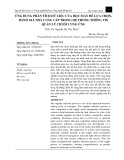
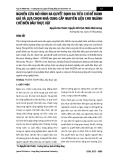
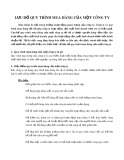
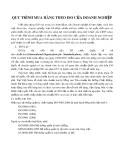
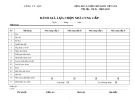
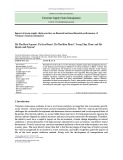
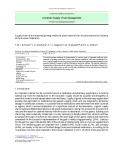
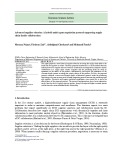
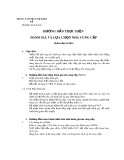








![Đề kiểm tra Quản trị logistics [mới nhất]](https://cdn.tailieu.vn/images/document/thumbnail/2025/20251015/2221002303@sv.ufm.edu.vn/135x160/35151760580355.jpg)
![Bộ câu hỏi thi vấn đáp Quản trị Logistics [năm hiện tại]](https://cdn.tailieu.vn/images/document/thumbnail/2025/20251014/baopn2005@gmail.com/135x160/40361760495274.jpg)






